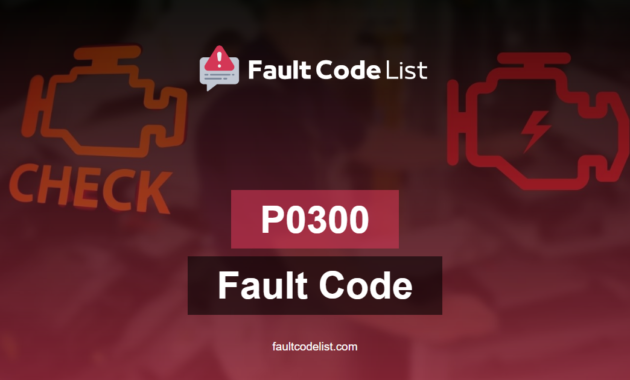When your vehicle’s malfunction indicator lamp (MIL) lights up and you retrieve the fault codes, you may be surprised to find that one of them is the P0300 code. So what exactly does this code mean and how serious is it? The P0300 code is an indication that there is a misfire in one or more cylinders of the engine. This means that the engine is not running as smoothly as it should and could potentially cause further damage to the vehicle if left unchecked.
What Causes the P0300 Fault Code?
There are several reasons why the P0300 code might appear in your car. Here are some of the most common causes:

- Worn or damaged spark plugs
- Faulty ignition coil
- Clogged fuel injectors
- Low fuel pressure
- Vacuum leaks
- Engine misalignment
Symptoms of the P0300 Fault Code?
If you see the P0300 fault code, do not ignore it, as it can cause various issues if left untreated. Here are some of the symptoms that you may experience if this code appears:
- Loss of power or acceleration
- Rough idle or stalling
- Poor fuel economy
- Engine misfires, which may cause the engine to shake or vibrate
- Difficulty starting the engine
- Engine warning light illuminated
The solution to the P0300 Code?
The first step in fixing the P0300 fault code is to identify the root cause of the problem. Here are some steps you can take:
- Check the condition of the spark plugs and replace them if necessary.
- Inspect the ignition coils for signs of damage or wear and replace as needed.
- Ensure that the fuel injectors are clean and functioning properly.
- Check the fuel pressure and pump to ensure they are working correctly.
- Look for any vacuum leaks and repair any that are found.
- If all else fails, you may need to take your car to a professional mechanic for further diagnosis and repair.
Remember that it is vital to address the P0300 fault code as soon as possible to prevent further damage to your vehicle. Ignoring the problem can cause other components in your engine to fail that could cost you more in the long run.
The P0300 fault code is an indication that your engine is not running smoothly and that there is a misfire in one or more cylinders. It is crucial to identify the root cause of the problem and take the necessary steps to fix it. By doing so, you can prolong the life of your vehicle and prevent further damage from occurring.
